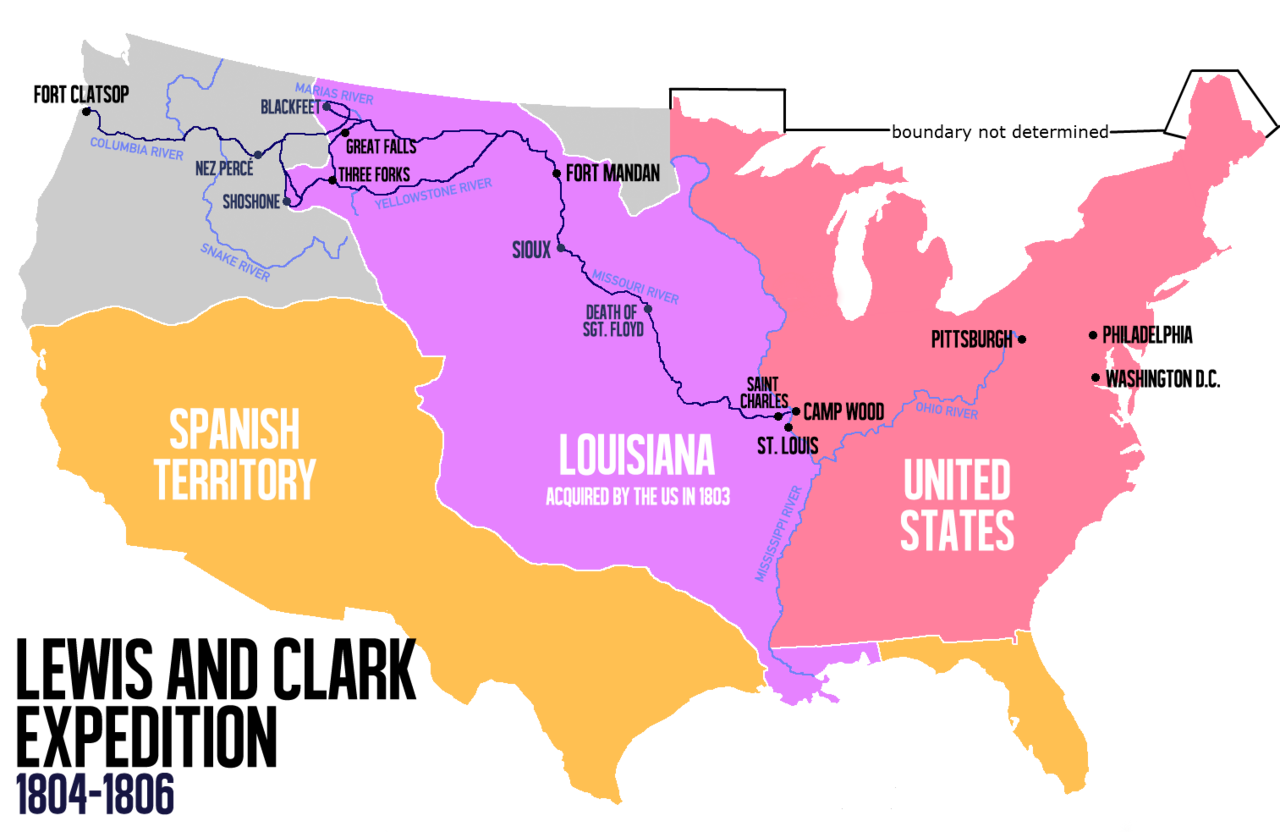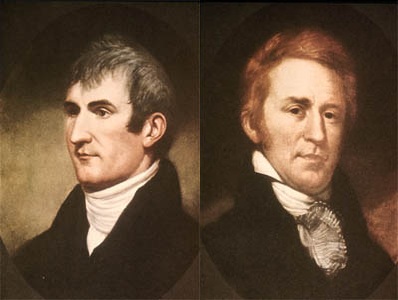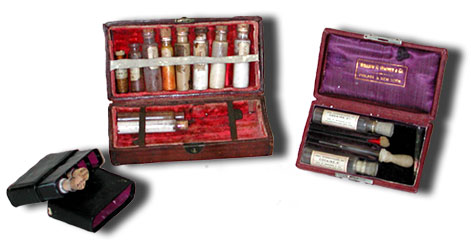EDC History: Lewis and Clark’s Gear List
Tony Sculimbrene 07.30.14

Lewis and Clark are among the most fabled explorers in American history, and their role in opening up the West both literally and politically shaped the country. National Geographic has an amazing website devoted to their expedition, and among the tidbits of interest is the gear list. You can find that here.
In all, 57 people left on the expedition, a group known as the Corps of Discovery. The Corp was secretly funded by Congress because of political concerns Thomas Jefferson had about his opponents, and its true mission–to discover ways of commercially exploiting the newly purchased Louisiana territory–was hidden from almost everyone, including US politicians and foreign powers. The Corp was also tasked with conducting scientific surveys of the vast new territories. During the expedition, they took along a good deal of gear, and that’s what is interesting to us.
Historians believe that the entire gear set up for the group cost $2,324 in 1803 dollars. The current equivalent would be roughly a half million dollars ($1 in 1803 is equivalent to $20.40 today, noting, of course, that inflation calculations before 1913 are just guesses; 1913 was the year the consumer price index started and inflation was officially tracked).
The Gear Breakdown
There are a lot of interesting items on the list. They took 25 hatchets with them, which basically meant half the group had a hatchet. They also took 24 “large knives,” hopefully outfitting the rest of the group. The clothing is pretty easy to understand–lots and lots of wool. Wool pants. Wool shirts. Wool overalls. They also took with them lots and lots of stuff to do field repairs and upgrades. There were flints for rifles, lead sheets for bullets, lots of needles and thread. They took a lot of instruments as well, including a device for measuring longitude that was more than 10% of their budget. Finally, there were two horses for 57 people. Only two of the names are household names today, making it easy to figure out who got the horses and who had to hoof it.
The really amazing thing about the list of gear is how much of it is useful today and how much of it indicated a sophisticated understanding of the needs a person faces in the wilderness.
The knives, it turns out, are something of a mystery. Lots of folks have tried to figure out what the knife looked like exactly, including many custom makers, but it doesn’t seem that there is a consensus answer. A few look like the Bark River Bushcrafter with an traditional hexagonal handle.
Other versions look a little like a classic Canadian skinning “Russell” knife. We know they didn’t take Bowies. While we always think of large knives from that era as Bowie knives, the legendary fight on the sandbar wouldn’t take place for another quarter century. So the knife design is still something of a mystery (which adds to the cool factor).
Lewis and Clark also came down on the right side of the chopper v. axe debate and carried both. We have more information about this item as one of the hatchet heads survived. Patrick Gass, one of the individuals in the Corp of Discovery, made it back with his hatchet and it has survived since the expedition. It is on display at Lewis and Clark National Historical Park. The overall design is something that, once you imagine the missing handle, is instantly recognizable as a hatchet. The combination of the hatchets and the knives gave the Corps of Discovery just about any kind of edge you’d need in that kind of wilderness.
The first aid kit struck me as pretty impressive (and only a gear geek would have a pack for their first aid kit that was this neatly organized).
Be sure, I wouldn’t want any of that stuff today, not when I have the option of taking things like, oh, I don’t know–antibiotics, but it wasn’t the herbal remedies we commonly think of as “medicine” back in 1803. It was real medicine. For instance the kits included 50 dozen of something called Dr. Rush’s Thunderclapper pills (these were mercury based laxatives that worked with their meat heavy diet and, interestingly enough, allow modern historians to trace their exact route through the territory, following in well…er…not exactly their footsteps).
Finally, there is the fact that the gear was replete with fabrication and repair options. Lots of people with vastly more survival knowledge than me have underscored the importance of fabrication and repair. These are the parts of kits people most often forget, but they are the part of kits that allow people to function in the wilderness for long stretches of time. In 2000, scientists and historians found a knife in an archive that they believe was forged on the trip as a peace offering to an Native American tribe they met along the way.
There are two other interesting notes, but not about any particular gear, but about the list itself.
An Old-Timey Pocket Dump
First, it’s clear that Lewis and Clark understood the perils of buying cheap gear. One device they took, the Chronometer, a device used to calculate longitude, was a very expensive item. Many of the scientific instruments were. It cost roughly $250 in 1803 money and was more than 10% of their total gear budget. Buying top shelf gear is expensive initially, but it is actually cheaper and better over the long run.
Thirty $2 Wal-Mart “Folding Knifes” aren’t worth the same as a single Benchmade Mini Griptilian. Even if all thirty last as long as the Mini Grip, the convenience of carrying a knife that has a real steel that can take a useful edge is very valuable. Add to that all of the nice touches of the Mini Grip, and everyday use is a joy instead of a chore. This says nothing about the value of a warranty, especially Benchmade’s LifeSharp spa service. The $250 1803 GPS proves that Lewis and Clark understood the “I can’t afford to buy cheap crap” notion quite well.
Second, and perhaps most delightful for us, is the organization and retention of the list. It was not merely a checklist of things to take. They weren’t just using it as a reminder to make sure they didn’t forget anything. The list is derived from notes in their journals, and if they bothered to write in in their journals it was important to them. The fact that the list survived, but the tools themselves didn’t, tells us that Lewis and Clark valued the list as a thing in and of itself. It was a pocket dump in an age without cameras. It tells us, much like Otzi’s pure copper axe head, that Lewis and Clark, like you and me, were gear geeks at heart.
If you want a little adventure-y take on the Corps of Discovery Expedition, Stephen Ambrose’s Undaunted Courage is a good read, though not exactly up to the historian’s level of detail and accuracy. Bernard DeVoto edited the actual journals themselves and that book is also on sale.


